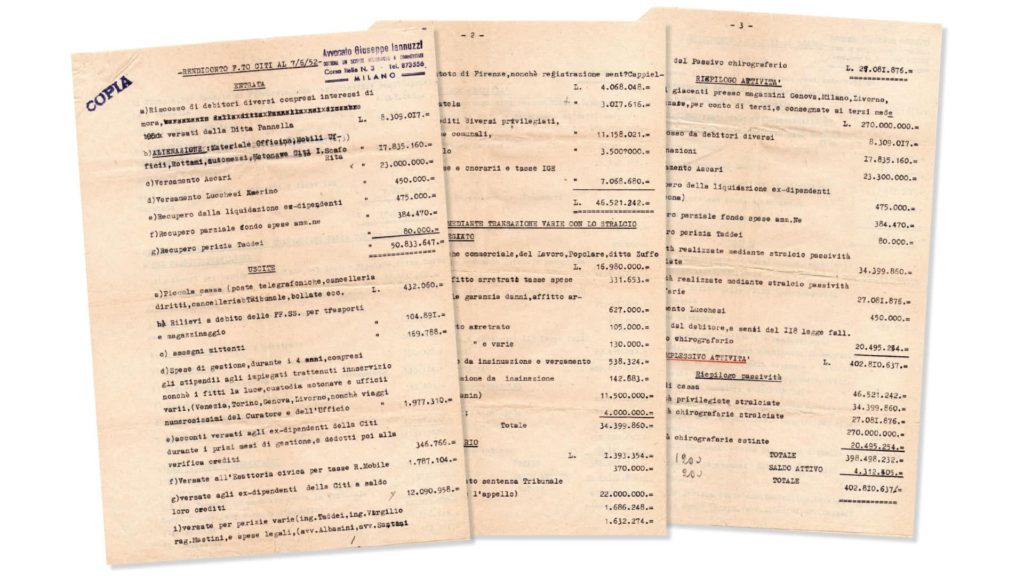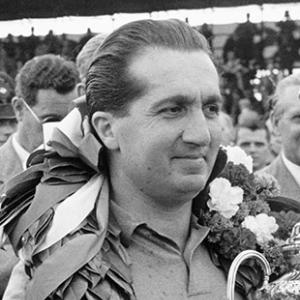Alberto Ascari: a collection of his personal treasures
Seventy years ago, ‘Ciccio’ Ascari was Grand Prix racing’s double World Champion elect. Doug Nye inspects an incredible UK collection of his personal treasures

The helmet of Alberto Ascari
Bernard Cahier - Getty Images / Jonathan Bushell
The passing of time can obscure reputations. Relying on the written word and second-hand reports can amplify inaccuracies through repetition and like the old game of Chinese whispers result in a distortion of the truth. It is why historians search out primary sources which shine an unfiltered light on their subject.
Such sources are rare. Which is why it is so unusual and so important to be able to study one of the world’s greatest collections of primary sources relating to one of history’s greatest racing drivers.
It is hard to overstate the stature of double World Champion driver Alberto Ascari – the 70th anniversary of whose 1952-53 title wins for Ferrari we now celebrate. In period this great Italian star inspired innumerable young kids to tear happily around on their push bikes bawling “AsCARi! FerRARi!” in just the way they’d heard it on the radio news, almost every summer weekend.
Study his admirable victory record, and consider all the high placings, pole positions and fastest laps supporting it. Had the FIA Drivers’ World Championship existed in 1949 (it wasn’t founded until the following year) Ascari would have been a three-time Champion. Yes indeed – he really was not only a world-class racing driver – but by all accounts a thoroughly good guy too.
His image in period was as a supremely talented, tough but clean and fair racer –equally successful in business, and very much a respectable and happily married family man, father of two. By Italian standards he was by nature cool, calm and easy going. As a younger man he had been quite shy and introspective. With racing success came a more outgoing, confident demeanour.
He became widely popular, and following his shocking death at Monza – testing his own reaction to his celebrated 1955 Monaco GP harbour dive in his Lancia D50 – I have never heard anyone utter a bad word about him –something rare within the motor racing world.
Today, Ascari’s life story is instantly available at the stroke of a laptop key. But nothing can provide a closer, more tangible contact than the sight of artefacts once close and personal to him. It is why we are so excited to be granted access to the world class collection you see here – or parts of it at least. It is known as La Storia in Rosso (LSIR) and is rarely exposed to the public although some artefacts are lent to museums. For we enthusiasts it is simply the stuff of dreams.
Here are selected highlights, each of which reveals a little something about the character of the great Alberto (‘Ciccio’ to his pals) Ascari.
The racing legend as a family man
Apart from his consuming passion for racing, home life evidently meant much to Alberto Ascari. Prints from his family album reveal the tender, cheerfully affectionate side of a man whose understated style and smoothness as a racing driver was accompanied by a steely resolve. Here’s Papa Alberto with his wife Mietta, daughter Patrizia and son Tonino.
Alberto had been only seven when he had lost his father. He grew up as a quiet, rather withdrawn young man, before his passion for racing led him to compete – and newfound confidence blossomed. Recalling the pain of his own father’s loss he tried consciously to keep a distance from his own kids – to minimise their grief should history repeat itself… Tonino was 13 when Alberto died. He entered the motor trade and – despite disapproval from his mother – raced briefly, particularly 1962-64. But he did not shine. He was a friend of Bruno Deserti who was killed in a Ferrari test in 1965. After three other young Italian drivers also crashed fatally, Tonino retired, later to build Hiro engines and motocross bikes.
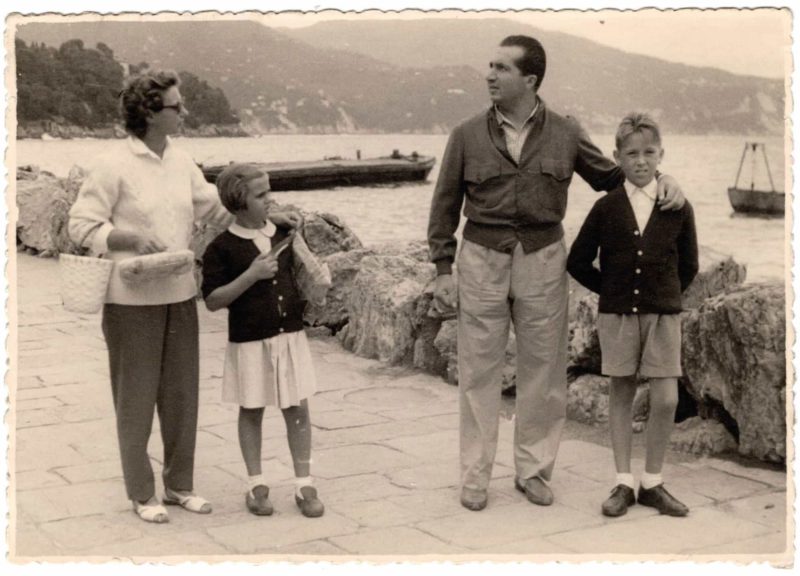
Alberto with his wife Mietta, daughter Patrizia and son Tonino
Letter from Enzo
When Enzo Ferrari baulked at what he regarded as his No1 driver’s greedy request for a higher 1954 retainer fee, he had offered 10m lire, but Ascari the savvy businessman had already agreed 25m with Gianni Lancia – then about £14,000 (£340,000 today).
Development of the Lancia D50 Formula 1 car lagged during that year, only emerging for the last race, but Ascari won the Mille Miglia for the Turin marque, breaking Ferrari’s run of victories. Mr Ferrari, who had learned much from Antonio – Alberto’s father – in his early racing days, and who had known Alberto from his childhood, wrote: “Among so many compliments for your beautiful, intelligent victory in the coveted XXI Mille Miglia, I too want to be close to you. Even if the circumstances of life have divided us, you are sure of the survival of our friendship whose origins transcend any contingent consideration. And that you won with an Italian car compensates for my resentment.”

A letter from Enzo Ferrari
1000 mile jacket
Perhaps the most evocative of all Ascari pieces within the LSIR collection is this lightweight leather jacket which he wore for warmth and some rain protection during his gruelling 11hr 26min drive to win the 1954 Mille Miglia for Lancia. It was a most punishing solo endurance drive to victory, only perhaps exceeded by the remarkably similar exploit of his erstwhile Lancia team-mate and effective protégé Eugenio Castellotti, for Ferrari, in the even-wetter 1956 Mille Miglia, which took him 11hr 37min…
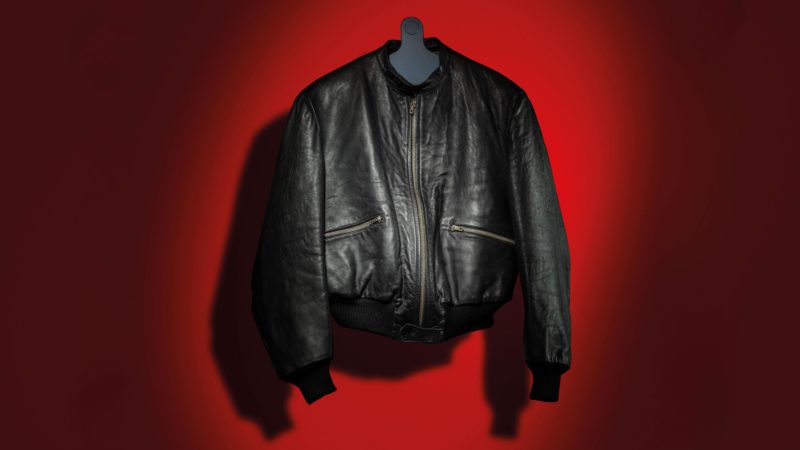
Ascari leather jacket
Jonathan Bushell
Head protection
Few race-wear items identify as much with any great racing driver as his crash helmet. During his career Alberto Ascari only had two hard crash helmets – as opposed to the soft linen wind-cap he initially wore. It’s often forgotten that hard crash helmets for competing drivers were not made mandatory by the FIA until as late as 1952.
Ascari ordered both of his from the British polo-helmet maker Herbert Johnson of Savile Row, having them collected by a friend. Ascari had a sturdy travelling chest for his goggles, shoes and crash helmet, right, liveried in his favourite shade of pale blue, matching his race wear. During the Monaco Grand Prix on May 22, 1955, Ascari was running second, almost a lap behind Stirling Moss’s leading Mercedes, when the German car’s engine failed and the distraught Englishman retired in the pits. Eighty laps had been completed, and Ascari tore down into the harbourside chicane, set to inherit the lead for Lancia. But instead he slid, perhaps on the stricken Mercedes’ oil – his Lancia careered through the flanking straw bales, clouted a quayside mooring bollard, then up, and over, to plunge down into the harbour water. Ascari kicked free of the sinking car, bobbed quickly to the surface, his crash helmet floating free as he – a strong swimmer – struck out. But, in a state of shock, nose bloodied, he was swallowing much seawater. Prudently, the AC de Monaco had a rescue boat circling. Duty diver Jacques Boissy plunged in, grabbed Ascari and guided him to safety. Soaked, battered and bruised, the great Champion was briefly hospitalised before returning home to his wife in Milan.
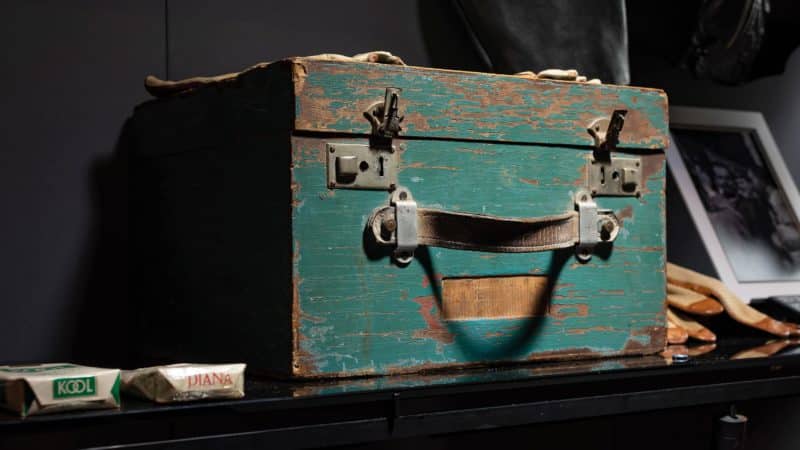
Ascari travel chest for his goggles, shoes and crash helmet
Jonathan Bushell
Just four days later he made the short trip to the Monza Autodrome, ostensibly to watch practice for the Supercortemaggiore sports car race. His protégé Eugenio Castellotti urged him to try his new works Ferrari 750 Monza sports car, just to drive again after his ducking. Ascari borrowed Castellotti’s helmet, and set off on his final laps – crashing fatally on the Vialone Curve.
Curiously, in May 1965, Paul Hawkins survived a copycat dive into Monaco harbour in Dickie Stoop’s Lotus 33 and, eight weeks later still, Jacques Boissy, Ascari’s rescuer, drowned at virtually the same spot when his prototype submersible malfunctioned.
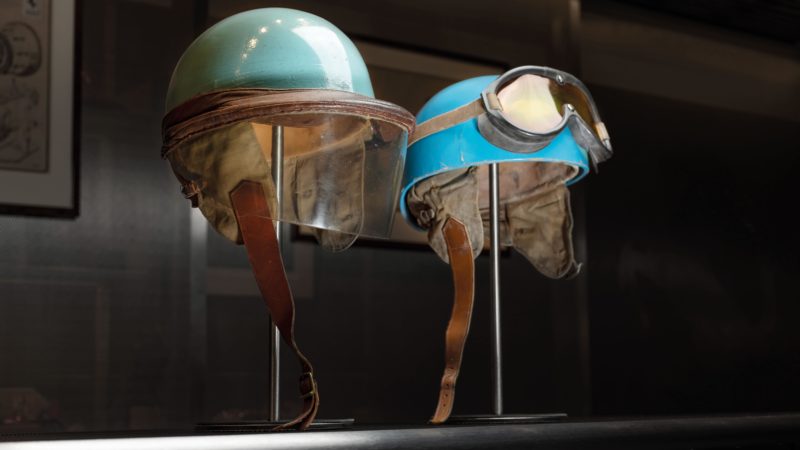
Ascari’s two hard crash helmets.
Jonathan Bushell
Wartime passports
Alberto Ascari’s racing aspirations were forced onto the back burner by Benito Mussolini’s self-destructive decision to take Italy into World War II in June 1940. He ran a transport company handling vehicle provision and logistics for the Italian armed forces, but always with an eye to the future – survival of this war until peace, and racing, would return. When Fascist Italy imploded in July 1943 German forces occupied the country against partisan resistance, and Allied invasion. Many Italian business people (including Mr Ferrari) wisely insured against potential arrest – or worse – by one of the combatants by buying alternative identity documents under assumed names. These for Alberto and Mietta Ascari were under the names ‘Arturo Arelli’ and ‘Marta Cavella’.
When a deal’s a deal…
Mr Ferrari’s April 30, 1953 letter of intent to Ascari confirms their verbal agreement for the new year. The reigning World Champion was to receive 50% of all start money earned, plus expenses. He was also to receive 50% of all prize money and bonuses from suppliers of the team’s tyres, fuel and lubricants, and sparkplugs.
The letter begins: “With reference to today’s verbal agreements, it is understood that Scuderia Ferrari will place a Ferrari car at your disposal on the occasion of all the races in which it decides to participate.
“[You are] therefore committed to being promptly at the competition venues to participate in training sessions and races, as well as to lend [your]self for any acceptance tests for which the Scuderia deems your collaboration indispensable.”
The final lines read: “This agreement is valid until 30 April 1954 and before that date you remain committed to agreeing to the renewal of this collaboration as long as it brings to both parties the favourable results already offered to us in the past.”
The scribbled note is in Ascari’s handwriting. It reads “Gianni Lancia, 42710 Turin, Piazza Solferino 6, 3-12-1953, half-past 12” – the meeting with Lancia in which Ascari was made the offer he could not refuse, ending the Ferrari contract.
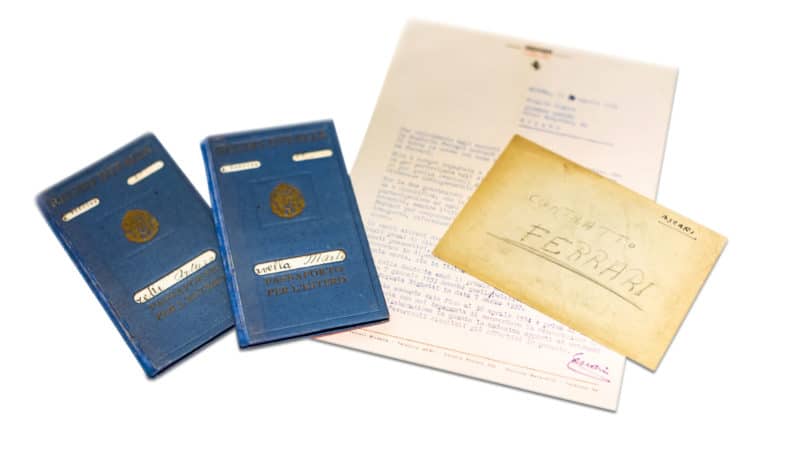
Ascari’s passports and Ferrari contract
Jonathan Bushell
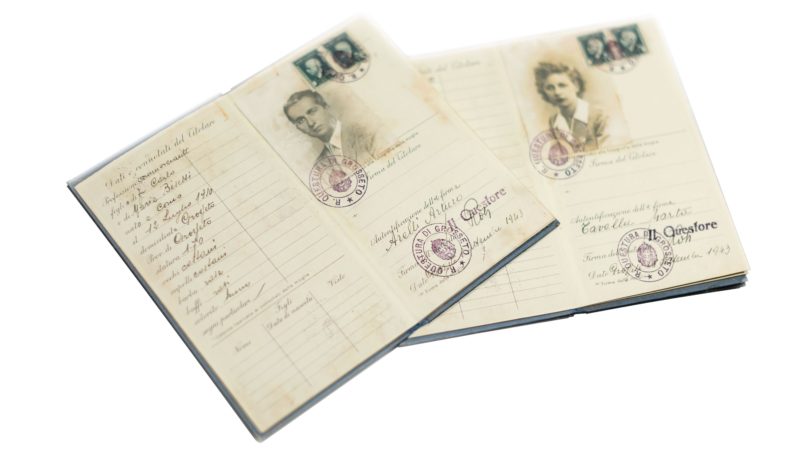
Alberto and Mietta Ascari’s passports
Jonathan Bushell
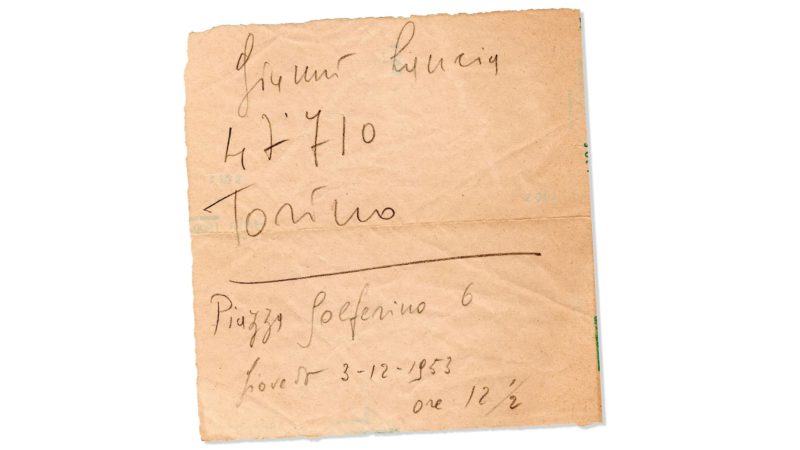
Ascari’s scribbled note
Crocodile tears
Unless the notion of driving in the fatal Monza test session was quietly in the back of his mind when he went to the Autodrome on May 26, 1955, it would appear that Ascari had no expectation of getting behind the wheel of a competition car until his former Lancia F1 team-mate Eugenio Castellotti suggested he should do so. The Ferrari management concurred. Ascari accepted, wearing his everyday clothes – not his lucky blue polo shirt, nor his lucky blue trousers, nor his lucky blue crash helmet which was having its strap replaced after the Monaco ducking.
He borrowed Castellotti’s helmet and drove off… to his death. A chilling surviving piece within the LSIR collection is his wallet, returned to Mietta after the accident, its crocodile skin surface scuffed by impact upon the track surface.
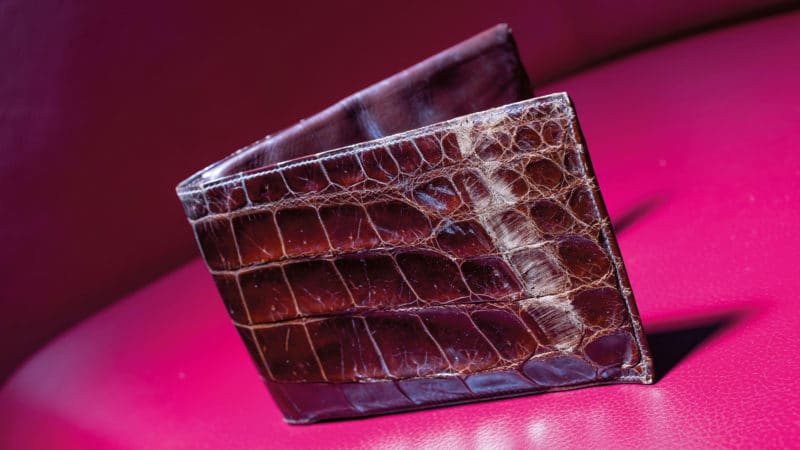
Ascari’s scuffed crocodile wallet from his fatal crash
Jonathan Bushell
Firm friends, fine times
The most influential racing relationship of Ascari’s cut-short life was his friendship with the nine-years older Luigi ‘Gigi’ Villoresi. Having lost his father, the older man became a virtual father figure, certainly an elder brother, to Ascari. They raced Maseratis pre-war as rivals, then together from 1946-48, before being signed as a duo by Ferrari.
Villoresi felt Ferrari offered the most competitive cars, but always had reservations about Ferrari the man, dating from his family’s treatment by Alfa Romeo/Ferrari following his adored kid brother Emilio’s fatal accident during a press demo of the latest Alfa Romeo ‘Alfetta’ at Monza in 1939. In effect Alberto Ascari replaced ‘Mimi’ as Gigi’s substitute kid brother.
After racing with Ferrari 1949-53, Villoresi and Ascari took Gianni Lancia’s offer of vastly better pay and decamped to the Turin team. They had co-driven a Lancia together as early as February 1951, winning the Sestriere Rally in an Aurelia B10, and ended that season by sharing a Ferrari 212 Inter in the mighty eight-stage Carrera Panamericana race through Mexico. After winning four stages they finished second, and celebrated here on a big-game fishing foray to Acapulco.
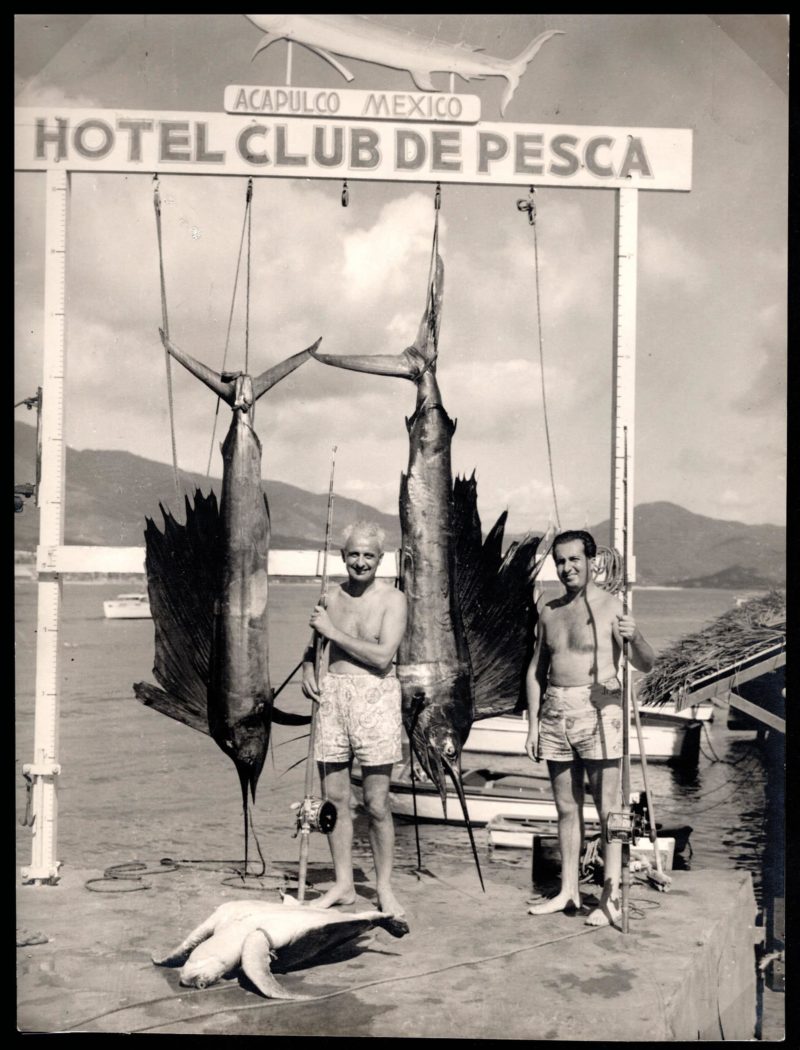
Villoresi and Ascari with 2 Atlantic Sailfish
A ring from the ‘Ring
One would not normally associate 1950s racing greats with personal jewellery, but a touchingly personal piece is the ring pictured here, presented to Ascari by the Automobilclub von Deutschland, organisers of the annual German Grand Prix at the Nürburgring, for his three consecutive victories in their great race, in 1950-51-52.
It was in December 1952 that the Italian governing body received a letter from the President of the associated ADAC in Germany, which they sent on to Ferrari. Team Manager Nello Ugolini then forwarded it to Ascari, with a hand-written note: “We would like to give you a special award which will be conferred at the Frankfurt Motor Show in March 1953.” This ring is that award. Back at the Nürburgring for the 1953 ADAC 1000Kms sports car race, Ascari then co-drove a Vignale-bodied works Ferrari 375 Mille Miglia Spider with Giuseppe Farina, and won yet again – great Champion drivers on the world’s greatest motor racing stage.

Jonathan Bushell

Jonathan Bushell
Not a pay driver
Alberto Ascari’s acute business sense is reflected by this surviving expenditure-versus-earnings document dated June 7, 1952. It records an overall total of 402,810,637 lire having passed through his accounts. In 1952 with a currency conversion rate of 1749 lire to the pound sterling this represented no less than £230,309, equal to some £5.2m by today’s values.
Obviously such a figure barely scratches the surface of the sums a Champion-level Formula 1 driver commands today, but it demonstrates that by most standards Ferrari’s double-World Champion Driver 1952-53 was certainly doing quite nicely, thank you…
